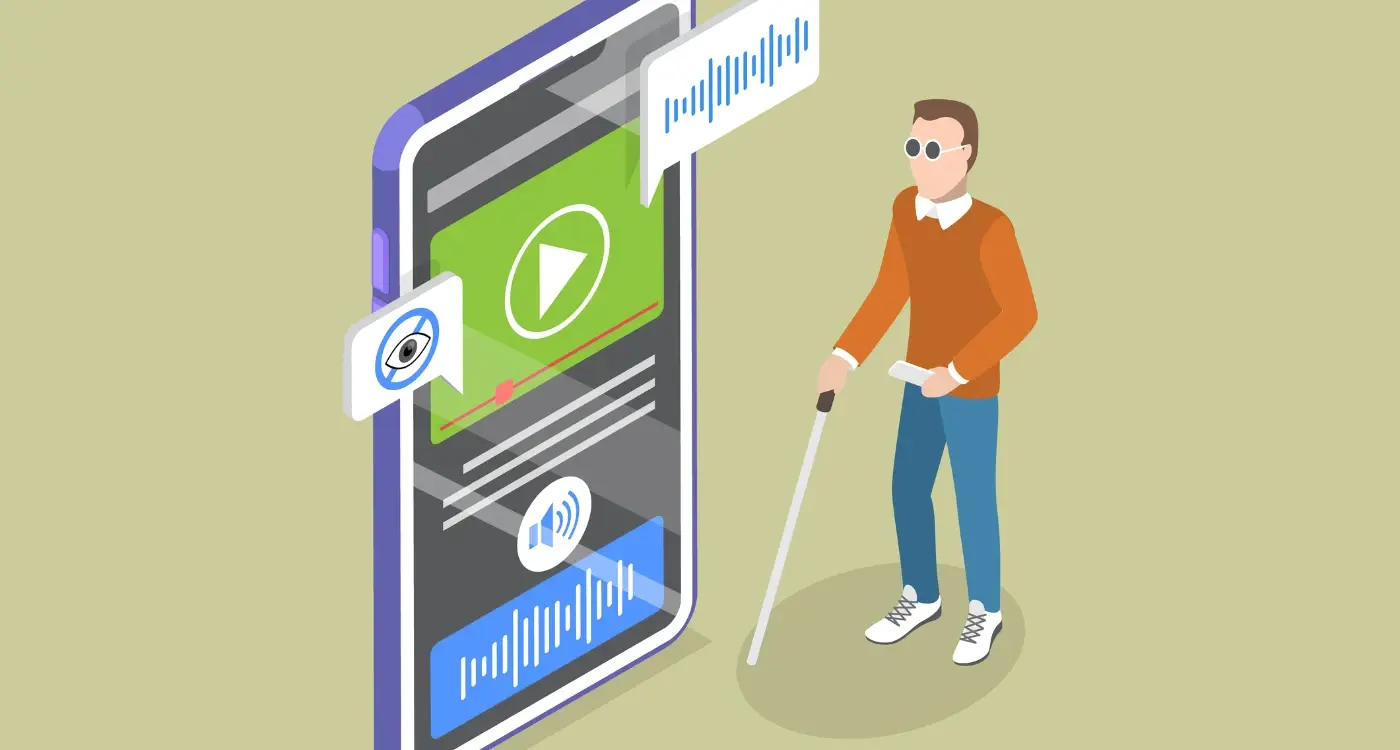What Are the Legal Requirements for App Accessibility in the UK?
Building mobile apps in the UK means you need to follow certain legal rules about accessibility—and trust me, these aren't suggestions you can ignore. Over the years, I've watched the regulatory landscape shift dramatically; what started as basic guidelines has evolved into proper legal requirements that can land you in serious trouble if you get them wrong.
The thing is, accessibility laws exist for a brilliant reason. They make sure that everyone can use your app, regardless of whether they have disabilities or not. We're talking about people who might be blind, deaf, have limited mobility, or face other challenges that make using technology difficult. These regulations aren't just about being nice—they're about creating equal access to digital services.
In the UK, mobile app accessibility is governed by several key pieces of legislation. The Equality Act 2010 forms the foundation, but there are also specific regulations like the Public Sector Bodies Accessibility Regulations 2018 that apply to government and public sector apps. Private companies aren't off the hook either; if your app provides goods or services, you could face legal action under disability discrimination laws.
Understanding your legal obligations isn't just about avoiding penalties—it's about building apps that work for everyone and expanding your potential user base
What makes this tricky is that the rules aren't always black and white. Different types of apps face different requirements, and the standards you need to meet can vary depending on who you are and what your app does. That's why getting to grips with UK regulations, mobile app compliance, and legal requirements from the start is so important.
Understanding UK App Accessibility Laws
When I first started developing apps, accessibility wasn't something many people talked about—but times have changed, and rightly so. The UK now has proper legal requirements that make sure apps work for everyone, including people with disabilities. This isn't just about being nice; it's the law.
The main piece of legislation you need to know about is the Equality Act 2010. This law says that businesses can't discriminate against people with disabilities, and that includes making sure your digital services are accessible. Your mobile app falls under this category, which means you need to make it usable for people who might have visual, hearing, motor, or cognitive impairments.
What This Means for Your App
The Equality Act doesn't give you a detailed technical checklist—that would be far too simple! Instead, it sets out broad principles about reasonable adjustments and equal access. But here's where it gets interesting: the law works alongside other standards and guidelines to create a clearer picture of what you actually need to do.
Most legal experts point to the Web Content Accessibility Guidelines (WCAG) as the benchmark for what counts as accessible. The UK government uses WCAG 2.1 AA as their standard, and whilst it's not explicitly written into the Equality Act, it's become the accepted measure of compliance.
Public Sector vs Private Sector
Here's something that catches people out: if you're developing an app for a public sector organisation, you'll face stricter rules under the Public Sector Bodies Accessibility Regulations 2018. These organisations must meet WCAG 2.1 AA standards—no exceptions.
- Public sector apps must comply with WCAG 2.1 AA standards
- Private sector apps must make "reasonable adjustments" under the Equality Act
- Both sectors can face legal action for non-compliance
- The regulations apply to apps published after September 2018
The good news? Following these guidelines isn't just about avoiding legal trouble—accessible apps often work better for everyone and can reach a much wider audience.
Who Must Follow These Rules
The short answer? Almost everyone who creates or runs a mobile app that serves the public needs to think about UK accessibility regulations. But let me break this down properly because it's not quite as simple as that—and getting it wrong could land you in hot water.
If you're building an app for a public sector organisation, you absolutely must comply. This includes apps for councils, government departments, the NHS, universities, and schools. There's no wiggle room here; these rules are legally binding and have been since the Public Sector Bodies Accessibility Regulations came into force.
Private Sector Requirements
Here's where it gets interesting for private companies. While there isn't a specific law that says "all private mobile apps must be accessible," you're still bound by the Equality Act 2010. This means if your app provides a service to the public and excludes people with disabilities, you could face discrimination claims. Think banking apps, shopping apps, transport apps—basically anything people rely on for daily life.
Size Doesn't Matter
I've worked with tiny startups and massive corporations, and the legal obligations don't change based on company size. Whether you're a one-person operation or a multinational company, if you're serving UK users with disabilities, you need to consider accessibility. The risk might be lower for smaller companies, but the legal principle remains the same.
If you're unsure whether your app falls under these requirements, ask yourself this simple question: would someone struggle to use essential features of your app because of a disability? If yes, you should be following accessibility guidelines regardless of legal obligations—it's just good business.
The Web Content Accessibility Guidelines Explained
The Web Content Accessibility Guidelines—or WCAG as everyone calls them—are the international standards that tell us how to make digital content accessible. Think of them as the rulebook for app accessibility in the UK. They're developed by the World Wide Web Consortium, which is the main international standards organisation for the web.
Now, you might be wondering why web guidelines matter for mobile apps. The truth is, these guidelines cover all digital content, not just websites. The principles work just as well for apps, which is why the UK government uses WCAG 2.1 Level AA as the benchmark for app accessibility compliance.
The Four Main Principles
WCAG breaks everything down into four main principles that are actually quite straightforward. First, your app must be perceivable—users need to be able to see, hear, or otherwise sense your content. Second, it must be operable—people need to be able to navigate and use your app's features. Third, it must be understandable—your content and interface should make sense to users. Finally, it must be robust—your app should work with different technologies and assistive devices.
Understanding the Levels
WCAG has three compliance levels: A, AA, and AAA. Level A covers the most basic accessibility features; Level AA includes everything from Level A plus additional requirements that remove significant barriers; Level AAA is the highest standard but often impractical for most apps. The UK legal requirement is Level AA, which strikes a good balance between accessibility and practicality. Meeting Level AA means your app will be usable by most people with disabilities whilst remaining commercially viable to develop and maintain.
What Your App Must Include For Accessibility
Right, let's get down to the practical stuff. When you're building a mobile app that needs to comply with UK regulations, there are some specific features you absolutely cannot skip. I've seen too many apps get into hot water because they missed these basics—and trust me, retrofitting accessibility is much harder than building it in from the start.
The big ones are pretty straightforward once you know what to look for. Your app needs proper text alternatives for images, which means every icon, photo, or graphic needs descriptive text that screen readers can actually understand. Not just "image" or "button"—that's useless. Think "Search for restaurants" or "Profile photo of user".
Navigation That Actually Works
Your navigation structure needs to make sense without visual cues. Users should be able to move through your app using just a keyboard or voice commands. This means logical tab orders, clear focus indicators, and proper heading structures that screen readers can jump between.
Colour and Contrast Standards
Text needs enough contrast against backgrounds—the legal compliance standards are specific about this. You cannot rely on colour alone to convey information either. If your "buy now" button is just red text, that won't cut it.
Getting accessibility right from day one saves you from expensive legal headaches and actually makes your app better for everyone
Your app also needs to work with different text sizes. Some users need larger fonts, and your layout should adapt without breaking. Audio content needs captions or transcripts, and any time-based content—like notifications that disappear—needs to be adjustable. These aren't suggestions; they're legal requirements under UK regulations for mobile app compliance.
How To Test If Your App Meets The Standards
Testing your app for accessibility isn't as complicated as you might think—you just need to know what to look for. The good news is that there are several ways to check if your app meets the WCAG guidelines without needing a degree in accessibility.
Start with automated testing tools; these scan your app and flag obvious issues like missing alt text or poor colour contrast. Popular tools include axe DevTools and WAVE, which can catch many problems quickly. But here's the thing—automated tools only catch about 30% of accessibility issues, so don't rely on them alone.
Manual Testing Methods
The real test comes from manual checking. Try using your app with a screen reader turned on—this shows you exactly what blind users experience. Most smartphones have built-in screen readers like VoiceOver on iOS or TalkBack on Android. Navigate through your app using only these tools and see if it makes sense.
Test your app's colour contrast using online contrast checkers—text should have a ratio of at least 4.5:1 against its background. Check that all interactive elements can be reached using keyboard navigation or voice commands.
User Testing With Real People
Nothing beats testing with actual users who have disabilities. You can recruit participants through disability organisations or accessibility testing services. Their feedback will highlight issues that automated tools and manual testing might miss.
Don't forget to test on different devices and operating systems—what works on one platform might not work on another. Keep detailed records of any issues you find so you can track fixes and improvements over time.
What Happens If You Don't Follow The Rules
Getting caught without proper accessibility compliance isn't just embarrassing—it can be seriously expensive. The public sector faces the toughest penalties, but private companies aren't immune either. Legal action can come from multiple directions, and trust me, none of them are pleasant to deal with.
For public sector organisations, the consequences are well-defined and harsh. You could face judicial review proceedings, which means courts can force you to make changes immediately. There's also the possibility of enforcement action from the Equality and Human Rights Commission, who have real teeth when they want to use them. Private companies face a different but equally challenging landscape—discrimination lawsuits under the Equality Act can result in significant compensation payouts.
Financial Penalties You Might Face
The costs add up quickly when you're non-compliant. Legal fees alone can run into tens of thousands, and that's before any compensation awards. Public sector bodies have been forced to completely rebuild their digital services at enormous expense.
- Discrimination compensation claims (no upper limit)
- Legal costs and court fees
- Emergency accessibility audits and fixes
- Potential ongoing monitoring requirements
- Reputational damage leading to lost business
Beyond The Money
The financial hit is just the beginning. Your brand reputation takes a beating when accessibility issues become public—and they often do. Social media moves fast, and accessibility advocates are vocal about companies that don't meet their obligations. You'll also face the operational nightmare of rushing through fixes while dealing with legal pressure.
Start accessibility planning early in your app development process. Retrofitting accessibility features costs roughly five times more than building them in from the start, and that's without any legal pressure driving up timelines.
The good news? Most issues are preventable with proper planning and testing. UK regulations for mobile app legal compliance might seem daunting, but they're manageable when you approach them systematically from day one.
Conclusion
Building accessible apps isn't just about following the law—though that's obviously important! It's about creating something that works for everyone. When you design with accessibility in mind from the start, you're not just ticking boxes; you're opening your app to millions of people who might otherwise struggle to use it.
The rules we've covered might seem overwhelming at first, but they don't have to be. Start with the basics: make sure your text is readable, your buttons are big enough, and your app works with screen readers. Test early and test often. Get feedback from real users who actually need these features—they'll spot issues you never would have thought of.
If you're a public sector organisation, you don't have a choice in this matter. The Public Sector Bodies Accessibility Regulations mean you must comply. But even if you're a private company, ignoring accessibility is risky business. The legal landscape is shifting, and what's optional today might be mandatory tomorrow.
The truth is, good accessibility often leads to good design for everyone. Clear navigation helps all users find what they need faster. High contrast text is easier for everyone to read. Voice controls are handy when your hands are full. When you make your app accessible, you're not just helping people with disabilities—you're making a better product for everyone who uses it.
Share this
Subscribe To Our Learning Centre
You May Also Like
These Related Guides

How Do International Accessibility Laws Apply to Mobile Apps?

What Are The Legal Requirements For Mobile Apps?



